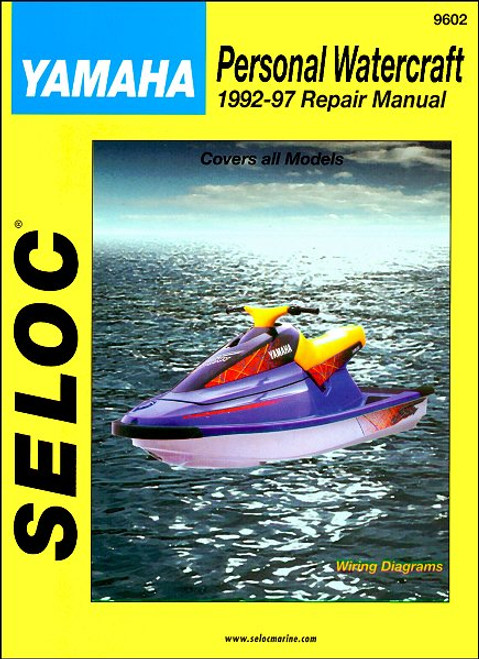It's important to know your Yamaha bike inside and out. In addition to making you a better driver, you'll be better equipped to handle any issues that pop up. Use this 1992-2003 Yamaha XJ600S/XJ600N repair manual as your guide and you should be all set for year after year of enjoying your bike. You'll love that you can finally take care of repairs without having to drop your bike off at a mechanic. In addition to losing time out on the road, it's a costly venture that quickly eats into your budget. By learning some DIY skills from the repair manual, you'll save money and get back on your bike faster when a repair is required.
In addition to detailed repair and overhaul instructions, this manual also includes some basic info about fluid levels, tires and bike specs. It walks you through routine maintenance and how to reduce the likelihood of repairs with regular tune-ups. Finally, there are excellent references for any owner, like tools and workshop guides and tips for security, storage and troubleshooting. The following 1992-2003 Yamaha models are featured in this manual:
Book Excerpt: 1992-2003 Yamaha XJ600 Diversion, Seca Repair Manual... FRAME, SUSPENSION AND FINAL DRIVE
ELECTRICAL SYSTEM
Subject: 1992, 1993, 1994, 1995, 1996, 1997, 1998, 1999, 2000, 2001, 2002, 2003 Yamaha XJ600S Diversion, Seca II service, maintenance, repair. ISBN-10: 1785210483 | ISBN-13: 9781785210488 | Haynes M2145
In addition to detailed repair and overhaul instructions, this manual also includes some basic info about fluid levels, tires and bike specs. It walks you through routine maintenance and how to reduce the likelihood of repairs with regular tune-ups. Finally, there are excellent references for any owner, like tools and workshop guides and tips for security, storage and troubleshooting. The following 1992-2003 Yamaha models are featured in this manual:
- Yamaha XJ600S Diversion, U.K. 1992-2003
- Yamaha XJ600S Seca II, U.S.A. 1992-1999
- Yamaha XJ600N, U.K. 1995-2003
Book Excerpt: 1992-2003 Yamaha XJ600 Diversion, Seca Repair Manual... FRAME, SUSPENSION AND FINAL DRIVE
GENERAL INFORMATION All motorcycles covered in this manual use a double cradle frame. The frame is a one-piece unit constructed of round-section tubing. The front forks are of the conventional coil spring, hydraulically-damped telescopic type. The rear suspension consists of a steel oval-section swingarm supported by a coil spring/shock absorber unit. Rear spring preload is adjustable. The final drive uses an endless chain (which means it doesn't have a master link). A rubber damper (often called a "cush drive") is installed between the rear wheel coupling and the wheel.
FORKS | REMOVAL AND INSTALLATION
- Set the bike on its centerstand (if equipped) or support it securely upright.
- Unbolt the brake hose retainer from the fork leg. Remove the caliper mounting bolts and support the caliper out of the way. Don?t disconnect the brake hose and don?t let the caliper hang by the brake hose.
- Remove the front wheel (see Chapter 6).
- Unbolt the front fender.
- If you're going to remove the fork cap bolts, loosen them now.
- Loosen the upper and lower triple clamp bolts (see illustration). Slide the fork down out of the triple clamps and remove it from the bike.
- Installation is the reverse of the removal steps, with the following additions:
- Position the ends of the fork tubes flush with the upper triple clamp.
- Tighten all fasteners to the torques listed in this Chapter's Specifications.
- Pump the front brake lever several times to bring the pads into contact with the discs.
ELECTRICAL SYSTEM
ALTERNATOR | REMOVAL AND INSTALLATION
- Disconnect the cable from the negative terminal of the battery.
- Remove the seat and left side cover for access (Chapter 7).
- Remove the alternator wiring harness retainers on the left side of the engine. Remove the alternator cover bolts and remove the alternator cover, together with the stator coil (see illustration).
- Place the transmission in gear and have an assistant hold the rear brake on to keep the engine from turning. Loosen the rotor bolt, then remove the bolt and washer. Note: You can also hold the rotor with a strap wrench of the type used for removing large oil filters.
- Thread a rotor puller into the rotor and remove the rotor from the end of the crankshaft (see illustration). The rotor used on these models doesn't have a Woodruff key. NOTE: If you use an aftermarket rotor puller with multiple thread sizes, there may not be enough room to rotate it and thread it into the rotor because the engine case is in the way. In this case, hold the puller against the rotor and turn the rotor, either with a strap wrench or by turning the back wheel with the transmission in gear. Make sure the ignition (main key) switch is OFF when turning the engine.
- To remove the stator coil, remove the screws and detach the coil from the alternator cover.
Subject: 1992, 1993, 1994, 1995, 1996, 1997, 1998, 1999, 2000, 2001, 2002, 2003 Yamaha XJ600S Diversion, Seca II service, maintenance, repair. ISBN-10: 1785210483 | ISBN-13: 9781785210488 | Haynes M2145
TABLE of CONTENTS:
THE YAMAHA XJ600
- Identification numbers
- Buying spare parts
- Pre-ride checks
- Engine oil level
- Brake fluid levels
- Tires
- Bike specs
- Routine maintenance and servicing
- Specifications
- Lubricants and fluids
- Maintenance schedule
- Component locations
- Maintenance procedures
- Engine, clutch and transmission
- Fuel and exhaust systems
- Ignition system
- Frame and suspension
- Brakes, wheels and final drive
- Fairing and bodywork
- Electrical system
- Wiring diagrams
- Tools and workshop tips
- Security
- Storage
- Troubleshooting










